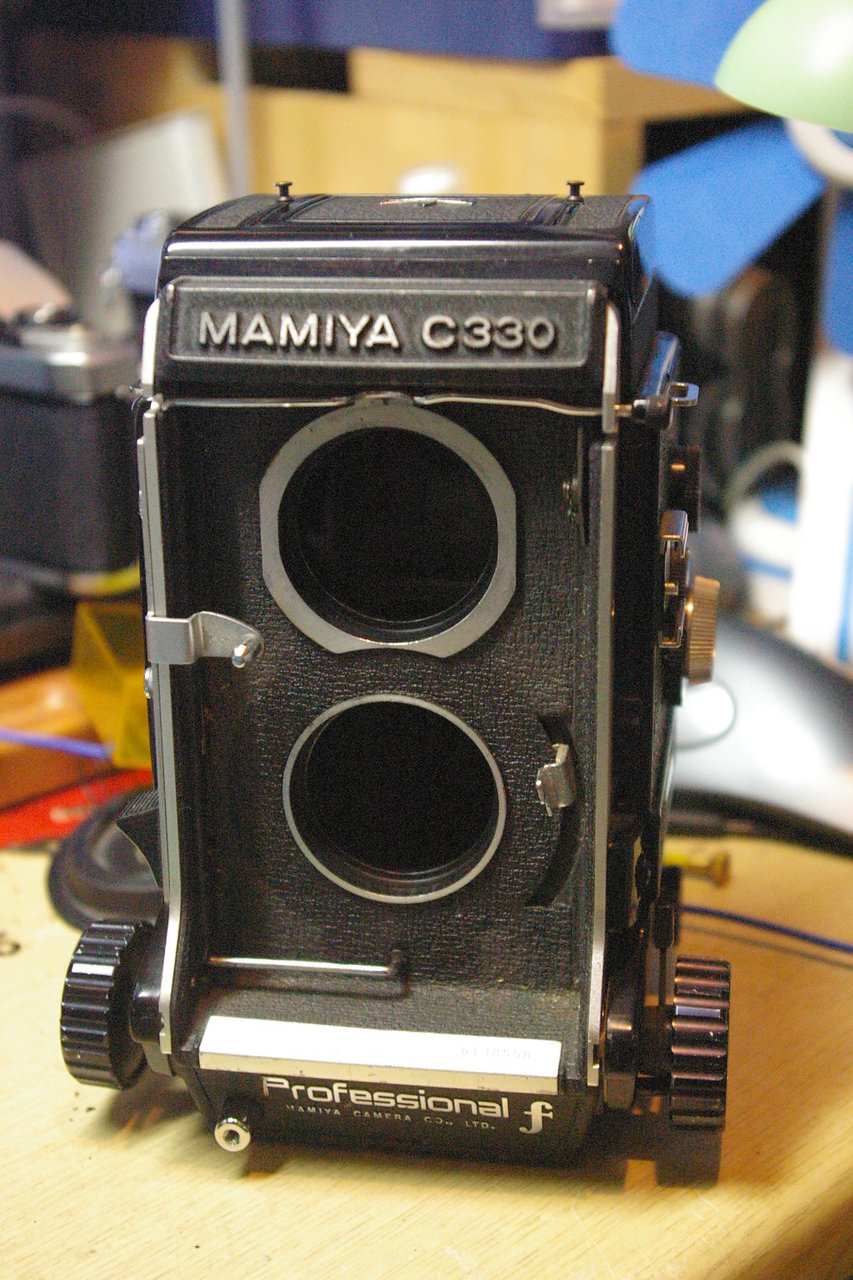

The camera had been CLA’d with the mirror being aligned, and front/back plates corrected for alignment accuracy. This particular lens resolved 100+ lp/mm at f/8. It’s multicoated optics were stunningly sharp when tested against the USAF resolution chart. I included a Hasselblad 500CM with 80mm CT* lens. I thought it would be interesting to compare Zeiss and Schneider optics from a similar time period. The cost of the 3.5E was so low as to make me blush even at the thought of it. Overall, the camera is not in as good condition as the 2.8E. This camera came with distance calcualted in feet and included a meter that is activated by a switch. The 3.5E Model 1 is largely unknown in Europe and several serial number lists do not include it. Its serial number is 1,7xx,xxx and came with single coated Schneider Xenotar optics. The other camera is a 3.5E Model 1 that was also built in 1956. It was recently CLA’d and operates beautifully. I can see only three minor cosmetic marks on it. It’s optics are single coated Zeiss Planar. One Rollei has a serial number of 1,6xx,xxx and looks to be a 2.8E Model 1 built in 1956. Now, it seems, I can’t get enough of them. There’s just something about old machine age gear that is well made and that is completely mechanical. Now whenever I pick one up, Rolleiflex make me smile and giggle. But after trying a Graflex 23 and a Hasselblad, I suddenly realized what makes these cameras wonderful. It has taken me three tries before falling in love with the way Rollei TLRs work. If you have cameras similar to mine, your results may/will vary.įirst is a pair of Rolleiflex twin lens reflex cameras. And please keep in mind that these are just four individual cameras out of literally millions that are/were manufactured. What better way to know something for oneself than to perform an empiric test that compared these jewels? In the spirit of sharing information openly, I have compiled my results here. So one goal of this is to document findings from the field and begin to compare them with what I report in shooting a resolution test chart. I have taken more than a little flak from people on the ‘net who say that such charts are of little use to anyone. While doing little to help me measure all important optical qualities, it’s proven useful to see how a camera system resolves a scene. Kerry Thalmann and I submit many cameras and lenses that pass through our hands to a USAF resolution test chart that was purchased from Edmond Scientific.

And I had a subject that was willing and able to help me explore a few mental musings.

As fortune would have it, I currently possess these cameras. I read where Zeiss Planar and Schneider Xenotar optics were “modern”, even by todays standards.

I found myself wondering how vintage Rolleiflex twin lens reflex cameras compared to Hasselblads single lens reflex and Mamiyas highly touted 7-series cameras. I’m sorry if this is a source of concern to my readers. The new images have been installed and my conclusions have been rewritten. However, I failed to let the negatives from this one camera completely stabilize. The enlarger head that I use is heated specifically to encourage negative placement stabilty. Please note: I made a mistake when I enlarged the small sections of the images taken using the Rolleiflex 3.5E Model 1. Testing Four Cameras, or how I learned I am completely neurotic


 0 kommentar(er)
0 kommentar(er)
